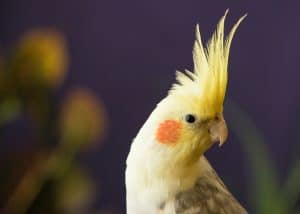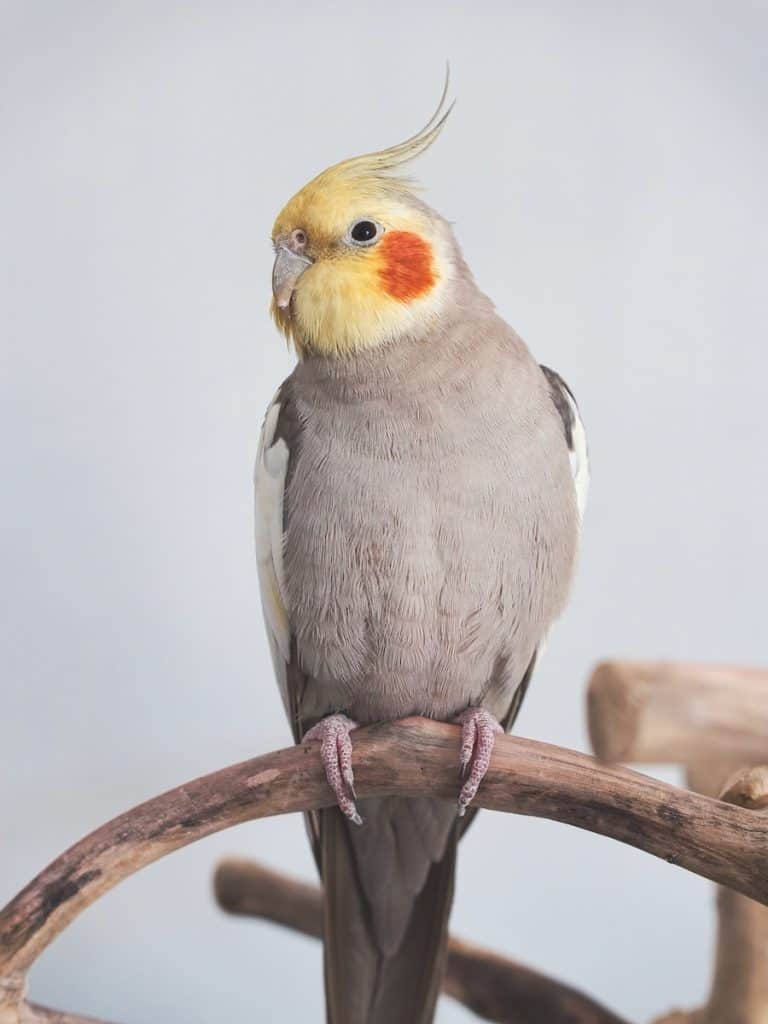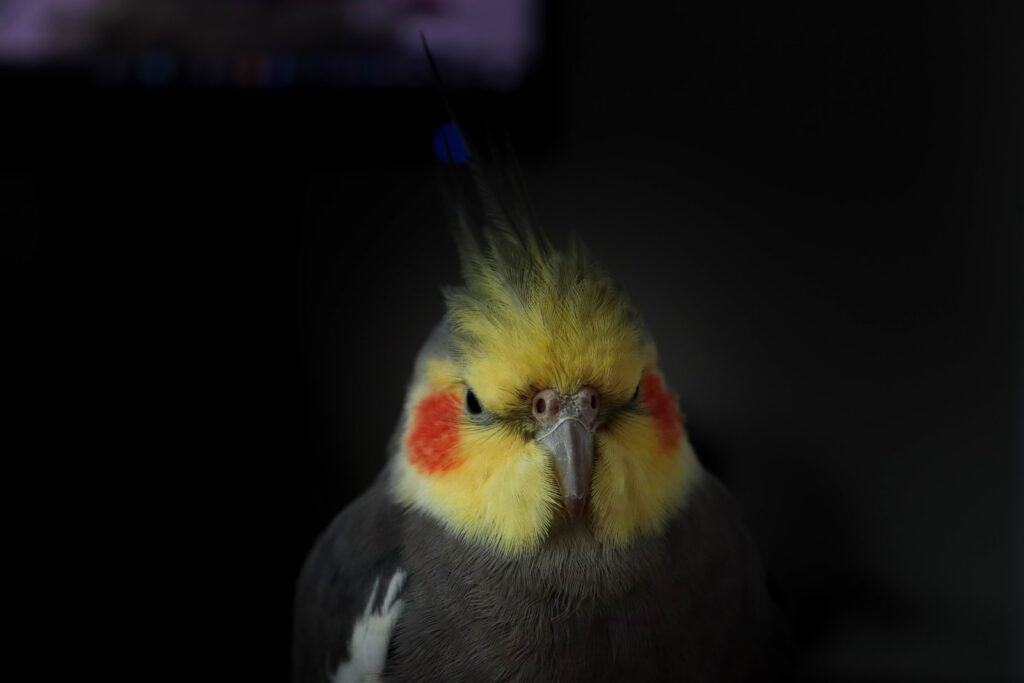What is my cockatiel trying to tell me? The capacity to comprehend cockatiel sounds and body language is one of the most essential elements in developing and preserving a good relationship with an avian companion.
Birds communicate with us using sounds, behaviors, and actions. They can “tell” us when they are happy, satisfied, frightened, ill, hungry, tired, furious, or ready to be held and played with by using their body language and vocalizations, especially for a playful cockatiel.
The capacity to communicate is an important component of any relationship, and it’s critical that bird owners understand the meanings of their cockatiel noises and actions in order to properly train and care for them.
While the behaviors of male cockatiels or female don’t always represent the same significance as those of other birds, we discovered there to be a general agreement in some basic cockatiel body language.

Flashing/Dilating Pupils
Pupils that are rapidly expanding and/or dilating might be a indication of aggressiveness, enthusiasm, tension, or pleasure. Keep an eye on any additional actions that follow the appearance of “pinning”/”flashing” pupils in order to correctly identify the cause.
This gesture indicates “Back Off!” in a bird that is displaying extra aggressive behavior such as tail fanning. You may get a painful bite if you push your luck by attempting cockatiel contact. This behavior may also be displayed by your pet in reaction to another bird, animal, or person in the area that it despises.
Cockatiel Sounds: What Is My Cockatiel Trying to Tell Me?
Barking
Some birds “bark” in excitement, during a “chatter” session, or to demonstrate their dominance over their mates in the cage or travel carrier
or other birds in the home even if there are no dogs.
Cockatiel Chattering
Dusk is when bird (s) are settling down for the night, and loud chattering or cockatiel inquisitive chirp is often heard. It’s thought to be a way for birds to communicate with each other or re-establish connections in the flock.
Chirping has a different meaning when it’s used by parrots. It usually indicates that the parrot is feeling secure and happy. When a bird is learning to talk, this quiet chattering can be heard; if you listen closely, you may hear words and phrases.
Growling
Growling is an indication of aggressiveness that may be accompanied by dilated pupils and ruffled feathers on the back of the neck. A bird does not want to be approached in most cases when it growls, like cockatiel’s war cry
. Retreat and wait for the bird to calm down before making any contact call cockatiels in these situations.
Purring
The peeping sound is very similar to the growling sound, although it does not usually include dilating eyes. The body of a bird is typically motionless and its feathers are puffed up. This indicates happiness.
Tongue Clicking
Cockatiels and cockatoos frequently extend their beaks to one another when talking, a habit that is sometimes referred to as “salivating.” The tapping of the tongue on the beak, which is usually interpreted as “I want to be friendly; I won’t hurt you,” occurs very rapidly.
Singing, Talking, Whistling Cockatiel
Parrots are known for their ability to mimic human speech and noises. Cockatiels, on the other hand, have a softer and less extensive range of sounds still, cockatiel calling, cockatiel alarm call is possible.
Singing is when your bird strings together numerous sounds in a pattern, often including whistles and chirps, in a high-pitched tone. This usually happens when they’re happy and relaxed. Consider purchasing multiple soundtracks which you can use to train them.
Whistling is more sporadic and may occur at any time, particularly in response to a noise or person that the bird finds interesting. Cockatiels can also learn to “talk” if taught from a young age, but it’s unlikely for them to have as extensive of a vocabulary as parrots.
Beaks
Beak Clicking
A bird’s beak clicking is a loud, consistent “clicking” sound that birds make when they feel threatened or are defending a certain item or space. It’s a sign that the bird is defending its turf or possessions, and trying to repel the “intruder.”
This is the cockatiel sound of scraping the lower mandible against the upper mandible, which is similar to the grinding sound of a child at night. It is generally an indication that a bird is calm and happy. Beak banging, on the other hand, your feathered friend is looking for attention.
Beak Wiping
We’ve identified three distinct causes for this behavior. It is usually an attempt to inform the other bird that it is intruding on its territory when done in the presence of another bird and defending territory. Displacement beak wiping is a type of displacement behavior that occurs when the bird cleans his beak while alone. It generally indicates one of two things: the bird is attempting to remove something stuck to his beak, or the wiping of the beak is part of a displacement aggression scenario.
- Size: 8.7x3.9 inch /22x10 cm
- Made of metal, it is safe and very resistant to bite.
- Entertaining enough to keep birds busy for a long period and they do enjoy playing with it.
- The bells is sweet sound, can attract the attention of the bird.
- The toy can help pet birds to ease the unhappy moods and release the pressure to keep them stimulated and healthy mentally.

Health-Related Behavior
Head Snaking
The “snaking” of the head feathers from side to side in a fluid motion is characteristic. It appears to be a sign of enthusiasm, pursuit for attention, or simply a display behavior. However, it can also be an indication that the bird is vomiting and attempting to shake food out of its mouth.
Panting
A bird panting with heat, overwork, and discomfort is a common sight. When novice flyers have regrown their flight feathers after a lengthy period of not flying, they may do this in order to help them get used to the sensation of flight again.
Regurgitating
It often implies that the bird has chosen you as its mate and wants to feed you if performed in front of or close to a person! This behavior is sometimes observed on a cherished toy or other item. Seeing cockatiel bonding signs demonstrate their affection for each other by feeding one another, and they do this by regurgitating food.
Sneezing
Birds sneeze for the same reasons that we do: dust, nasal irritation, and small bug or down feathers up the nose. If this activity has been positively reinforced in your bird’s environment, it will probably sneeze. If your bird is making a severe amount of mucus,
Tail Bobbing
It’s not always a sign of illness to see your parrot swing its tail back and forth. Some birds tail wagging while talking or singing. If the tail feathers swinging is limited to breathing in and out, it might be an indication of disease. Head bobbing, on the other hand is their way of getting your attention.
Happy Cockatiel Sounds
- Whistling: Cockatiels are excellent whistlers and often mimic common sounds, different tunes or create their own unique melodies. It’s common for them to whistle when they’re feeling content and happy.
- Chirping: Cockatiels have a variety of chirps they use to communicate different emotions. A happy cockatiel may produce a series of soft and high-pitched chirps.
- Singing: Cockatiels are natural singers and may burst into song when they’re feeling joyful. They can mimic various sounds, including phone rings, doorbells, or even human speech.
- Warbling: Cockatiels often warble when they’re in a good mood. Warbling is a combination of whistling and singing, resulting in a melodic and cheerful sound.
- Contented Purring: When a cockatiel is relaxed and content, they may produce a low, vibrating purring sound. It’s similar to the purring sound cats make.
Remember that each cockatiel has its own personality and vocalizations. What sounds like happiness for one cockatiel may differ slightly from another. It’s important to spend time observing and understanding your own cockatiels how they imitate sounds, and unique expressions of happiness. If you are still confused, you can use the bird sounds app to understand your bird sounds
How Cockatiels Show Affection to Each Other (And to You!)
- What Types Of Cockatiel Mutations Are There
- What Tricks Can You Teach Your Cockatiel
- What Toys Do Cockatiels Like
- What To Put In The Cage Tray Of Your Cockatiel
- What To Do When Your Cockatiels Molting
- What To Do When Your Cockatiel Escapes
- What To Do When You First Bring Your Cockatiel Home
- What To Do If Your Cockatiel Bites You
- What To Do If You Need To Take Your Cockatiel On A Vacation
- What Smells Are Toxic To Birds
- What Plants Are Toxic To Cockatiels
- What Other Accessories Do You Need To Buy For Your Cockatiel
- What Is Your Cockatiels Senses
- What Is The Pelleted Diet
- What Is The Lifespan Of A Pet Cockatiel
- What Is The Cockatiels Background
- What Is The Avian Anatomy Of Your Cockatiel
- What Is My Cockatiel Trying To Tell Me
- What Is A Pied Cockatiel
- What Is A Cockatiel
- What Foods Your Cockatiel Should Avoid
- What Foods Are Toxic To Cockatiels
- What Does It Mean When A Cockatiel Puffs Up
- What Does A Pregnant Cockatiel Look Like
- What Do You Need To Know About Your Cockatiels Feathers
- What Do You Need To Know About Your Cockatiels Droppings
- What Do Cockatiels Eat In The Wild
- What Do Cockatiels Eat Diet Nutrition
- What Are Your Cockatiels Seasonal Needs
- What Are Your Cockatiels Possible Health Problems
- What Are Your Cockatiels Household Hazards
- What Are The Nutrition Requirements Of Your Cockatiels Food
- What Are The First Aids In Case Of Emergency To Your Cockatiel
- What Are The Cockatiel Basics
- What Are Some Tips On Training Your Cockatiel
- What Are Common Cockatiel Behaviors
- What Are Cockatiels Signs Of Illness
- What Age Do Cockatiels Stop Breeding




